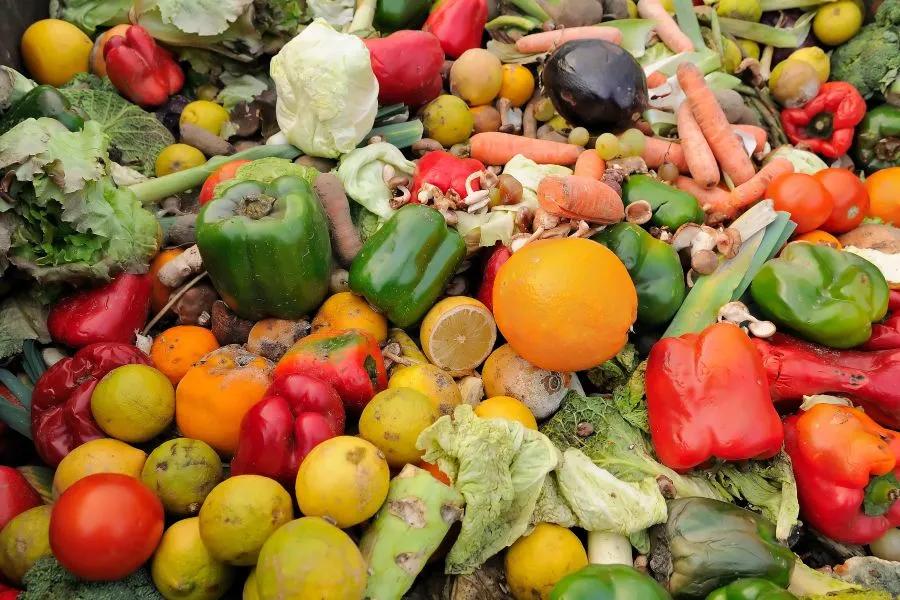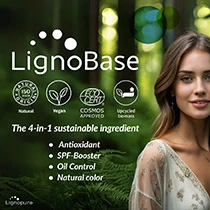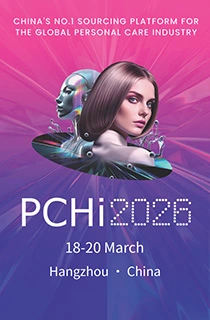Amphistar talks beauty’s biotech boom after funding boost
Key takeaways
- AmphiStar secures €2.5 million (US$2.91 million) from Germany’s SPRIND to scale its microbial biosurfactant production.
- The company upcycles agri-food waste into high-performance, palm- and fossil-free surfactants through fermentation.
- Regulatory frameworks lag behind biotech innovation, slowing market entry for sustainable beauty ingredients.

Belgian start-up AmphiStar has received €2.5 million (US$2.91 million) in funding from Germany’s Federal Agency for Disruptive Innovation (SPRIND) to scale manufacturing of its microbial biosurfactants. The SPRIND program identifies and supports what it recognizes as transformative technologies in Europe.
The funds mark AmphiStar’s third SPRIND award, bringing total support to €6 million (US$6.99 million). The company says the new money reinforces the German government’s confidence in its mission to turn bio-based waste into high-performance, fossil- and palm-free surfactants.
The SPRIND funding enables AmphiStar to advance its fermentation technology and accelerate the commercialization of new biosurfactant molecules from its library. Its solutions are all produced through the microbial upcycling of bio-based waste feedstocks into sustainable, market-ready ingredients.
Personal Care Insights speaks to a company spokesperson about how biotechnology is transforming the beauty industry, but that its progress is still getting stuck in regulatory nets.
How is biotechnology reshaping the development of cosmetic ingredients?
AmphiStar: Biotechnology is fundamentally transforming the beauty industry, enabling the sustainable production of key personal care ingredients, including fats, microplastics, and surfactants. This approach uses microorganisms like yeast and bacteria as scalable bio-factories, reducing reliance on extractive agriculture and petrochemistry.
 AmphiStar scales biotech surfactant production.AmphiStar leverages this technology by using bio-based side streams from the agri-food industry, rather than virgin feedstocks like sugar or palm oil, to produce biosurfactants. Using a mild, water-based fermentation process similar to brewing beer, we create fully-upcycled microbial biosurfactants, of which the first molecules are commercially available. These biosurfactants deliver high performance, purity, and mildness, effectively eliminating the need for fossil and virgin feedstocks.
AmphiStar scales biotech surfactant production.AmphiStar leverages this technology by using bio-based side streams from the agri-food industry, rather than virgin feedstocks like sugar or palm oil, to produce biosurfactants. Using a mild, water-based fermentation process similar to brewing beer, we create fully-upcycled microbial biosurfactants, of which the first molecules are commercially available. These biosurfactants deliver high performance, purity, and mildness, effectively eliminating the need for fossil and virgin feedstocks.
More than 15 years of research have enabled our proprietary synthetic biology (synbio) platform, which generated a library of over 500 microbial strains. This platform allows us to engineer custom molecules tailored to specific formulation needs, combining precision, scalability, and sustainability in ways that traditional chemical synthesis cannot match.
How does biotechnology contribute to the beauty industry’s sustainability goals?
AmphiStar: Biotechnology offers solutions to the industry’s most pressing sustainability concerns. Many biotechnology-derived ingredients are biological and biodegrade cleanly and quickly after use, leaving no harmful residues.
Furthermore, fermentation operates under mild conditions, which significantly cuts energy requirements and greenhouse gas emissions compared to chemical synthesis under high temperatures and pressures.
The commitment to using agri-food side streams further drives sustainability, eliminating the land use, chemical inputs, and habitat destruction linked to virgin palm oil or other first-generation sugar feedstocks. A comprehensive life cycle analysis (LCA) validates this approach, confirming that AmphiStar’s upcycled biosurfactants reduce global warming potential by a factor of four, water deprivation by 18 times, and biodiversity impact by 15 times compared with conventional alternatives. Sourcing these inputs locally also drastically reduces logistical chain emissions, all without compromising on cleaning or sensorial performance.
How are brands communicating the concept of “biotech beauty” to consumers, especially those who still equate ‘natural’ with ‘better’?
AmphiStar: Communication strategy is undergoing a fundamental shift. The value proposition is moving from the ambiguous ‘natural equals good’ to the verifiable principle of ‘scientifically proven equals responsible.’ Brands emphasize safety by design and combat rising consumer skepticism regarding greenwashing by leveraging LCAs. Openly publishing LCA figures — which demonstrate quantifiable environmental advantages over conventional ingredients — is used to build trust, substantiate genuine sustainability credentials, and provide full transparency regarding both successes and areas requiring improvement. Fermentation turns food waste into beauty ingredients.
Fermentation turns food waste into beauty ingredients.
What hurdles still exist in bringing biotech-derived ingredients to market?
AmphiStar: Biotechnology operates at the complex intersection of chemistry and biology, requiring compliance with multiple stringent regulatory frameworks.
The primary hurdle is that existing regulatory frameworks are not catching up fast enough with the speed of biotech innovation. Novel ingredients must adhere to comprehensive chemical regulations like REACH (Registration, Evaluation, Authorisation and Restriction of Chemicals) in Europe and the TSCA (Toxic Substances Control Act) in the US. This overlap presents a major challenge, as the expert chemists within these regulatory bodies, who are accustomed to traditional chemical synthesis, sometimes face difficulties in fully grasping the complexities of novel biological processes and the resulting bio-derived molecules.
Unfortunately, this gap in understanding and categorization can slow down the necessary approval process. This situation necessitates the preparation and submission of exhaustive safety dossiers, including comprehensive toxicological profiles, environmental fate data, and exposure assessments. Ultimately, while this slow and cumbersome process is frustrating for innovators, it is critically important. These stringent checks ensure that every ingredient is proven safe for long-term consumer use, which is essential for products used on yourself and your family.
Additionally, utilizing upcycled agri-food side streams as feedstock adds significant complexity. To guarantee the safety and quality of the final ingredient, a meticulous system for qualification, consistency testing, and documented traceability is mandatory for every incoming batch of raw material. This is complicated by the fact that biological processes can produce the same high-quality end product from variable starting inputs (ex., different batches or different types of waste/side streams), which is a concept often difficult for regulatory bodies trained in the fixed stoichiometry of traditional chemistry to fully understand and approve. This rigorous monitoring and certification process is essential for mitigating risks and legally validating sustainability claims. Regulatory gaps can slow biotech’s commercial potential.
Regulatory gaps can slow biotech’s commercial potential.
What will define the next generation of biotech beauty ingredients?
AmphiStar: The next generation of ingredients will be defined by disruptive advances in process efficiency, cost-effectiveness, and verifiable circularity. Key technical breakthroughs driving this evolution include continuous biomanufacturing. Demonstrated operational periods (ex., over 60 consecutive days on waste feedstocks) minimize process downtime, significantly increasing yields and lowering production costs while maximizing overall output.
Also, decentralized integration will be important. The co-location of production facilities and integration with waste providers (for example a plant integrated into a potato products factory making use of potato peels while relieving the factory owners of the burden of disposal) will help close loops and reduce transport emissions.
This combination is delivering improved performance characteristics and richer datasets on mildness and biodegradability, positioning biotech-based ingredients as the new default for responsible formulation.












